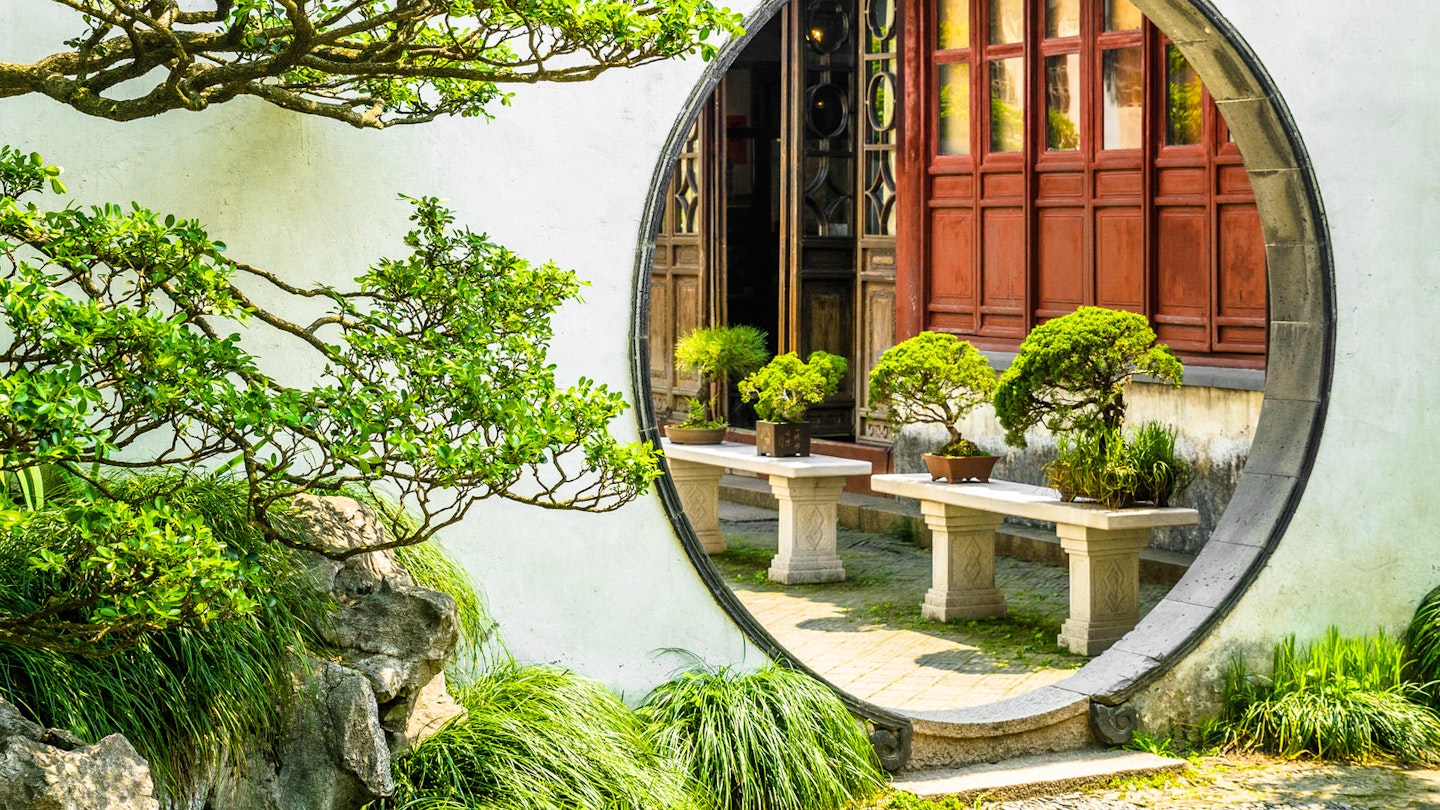As well as being known as the ‘Venice of the East’, thanks to its network of picturesque canals, the elegant city of Suzhou on China’s eastern seaboard is also famed for its classical gardens.
There are currently 69 gardens preserved in Suzhou, with nine designated as a UNESCO World Heritage Site. But what makes Suzhou’s gardens so special? And what should we look out for when we visit them?
Suzhou’s Fertile History
Nestled in the lower reaches of the Yangzi River, on the shores of Lake Tai – one of China’s largest freshwater lakes – Suzhou has long benefited from the fertile lands that surround it and the social stability they have supported.
The city we now know as Suzhou was founded in 514 BC as the capital of the-then state of Wu. Leaders took advantage of Suzhou’s natural environment, building elegant royal residences and game parks, and the royal court prospered thanks to the rich fishing and rice cultivation on the Yangzi Delta.
In the early 5th century BC, the Wu state fell, and King Helü died and was buried at Tiger Hill, still in existence today. The royal gardens fell into disrepair as new leaders came into power, although some were turned into ordinary gardens, laying the foundations for the development of the private gardens we see today.
By the end of the first century AD, Suzhou had become one of the world’s largest cities, and a boom in religious practice saw a rise in temple-style gardens. Built by religious scholars as rural retreats, these gardens reflected Suzhou’s natural beauty and strongly influenced the art of garden design.
Havens for Intellectuals
During the Ming (1368–1644) and Qing (1644–1911) dynasties, affluent scholars, poets, and artists moved to the area, creating a vibrant arts and literary scene. Their secluded and impeccably landscaped walled-off residence compounds provided peaceful retreats from the city’s heaving streets and canals.
Constructing and constantly improving their gardens became a way for socially established families to compete with their neighbors, creating ever more elaborate features, while discussing and developing the art and theory of landscape architecture. It’s claimed that during the height of garden construction, there were more than 200 private gardens filling half of the area within Suzhou’s city walls.
Moreover, gardens served as spaces for owners to demonstrate their standing in life and showcase their intellectual pursuits. Many exquisite examples can be seen at the Garden to Linger In.
Surviving Turbulent Times
Twentieth-century China was an altogether more difficult place for Suzhou’s gardens to flourish, facing upheavals during the Taiping Rebellion (1850–1864), World War II, and the Cultural Revolution. Many gardens were removed from private ownership or destroyed. Some, like the Humble Administrator’s Garden and the Garden of the Master of the Nets, were restored in the 1950s, while others lay in ruins for years.
However, in the 1980s, as China opened to a burgeoning tourism industry, the gardens were once again recognized as integral to the country’s cultural heritage. Gardens that needed it were renovated and opened to the public.
Elements of a Classical Chinese Garden
Suzhou’s gardens are considered classic examples of Chinese landscape architecture. They were intended to be microcosms of the natural world, with rich scenes within limited spaces. Miniature versions of features like rocks and trees create epic-looking landscapes in the tightest of corners. The Blue Wave Pavilion serves as a prime example of the illusion of vast seas and mountains on a garden-sized scale.
Moreover, moving through a garden should provide a change in views at every step, in the fashion of traditional Chinese scroll paintings, which unfurl in a continuous narrative. Surprises await around every corner, as the garden only reveals its secrets the longer and slower you wander through it. Elements such as walls, doors, windows, paths, corridors, and bridges facilitate this continuous change, while carefully engineered windows and dramatic moon gates allow for spectacular views.
Visit the Gardens
Suzhou is located in Jiangsu province on China’s eastern seaboard. High-speed trains connect the city to Shanghai in about 30 minutes.
Before visiting the gardens, it’s worth checking out the Suzhou Garden Museum, a free museum that details the history and cultural significance of the gardens.
Remember that all of Suzhou’s gardens are worth visiting, but to truly appreciate their intended tranquility, aim for the smaller, less famous gardens. Visiting on a weekday can help you avoid large tour groups that pass through the more well-known gardens, allowing for a more serene experience. Smaller gardens such as the Garden of Harmony offer a quieter introduction to Suzhou’s classical gardens.





